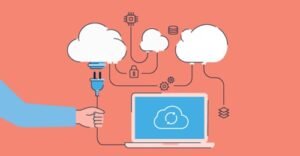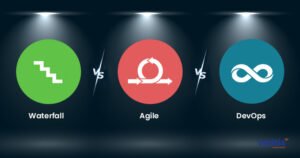
Introduction
In the ever-evolving technology landscape, IT development plays a critical role in shaping the way businesses operate and how individuals interact with the digital world. From software development to infrastructure management, IT development encompasses a broad spectrum of practices and innovations that promote efficiency, productivity, and innovation. This blog explores the latest trends in IT development and offers insights into the future.
- The rise of artificial intelligence and machine learning
Artificial intelligence (AI) and machine learning (ML) are changing the way we approach IT development. These technologies enable developers to build smarter applications that can analyze data, recognize patterns, and make decisions with minimal human intervention. Companies are increasingly using AI to improve user experiences, personalize services, and increase operational efficiency.

- Focus on cybersecurity
Given the increasing number of cyber threats, cybersecurity is a top priority in IT development. Developers must implement robust security measures throughout the software development lifecycle to protect sensitive data and maintain user trust. The adoption of practices such as DevSecOps, which integrate security into DevOps processes, is becoming increasingly important for proactive threat management.
- Cloud computing and serverless architecture
The shift to cloud computing continues to transform IT development. Companies are adopting serverless architectures that allow developers to build and run applications without managing the underlying infrastructure. This approach reduces costs, increases scalability, and allows teams to focus on writing code instead of managing servers.

- Agile and DevOps methods
Agile and DevOps methodologies are gaining increasing traction as companies seek to improve the collaboration, speed, and flexibility of their development processes. Agile emphasizes iterative development and customer collaboration, while DevOps focuses on unifying development and operations teams to streamline the software delivery process. Together, these methodologies help teams respond quickly to changing requirements and deliver high-quality software more efficiently.

- The Internet of Things (IoT)
The Internet of Things expands the possibilities of IT development by connecting everyday devices to the internet. This connectivity enables the collection and analysis of data in ways previously unimaginable. IT developers are tasked with developing secure, user-friendly applications that can manage IoT devices and harness the insights gained.

- Low-code/no-code development
Low-code and no-code development platforms are democratizing application development, enabling even people with limited programming skills to build applications. These platforms provide visual development tools that increase productivity and enable companies to respond quickly to market demands. IT professionals use these tools to accelerate development cycles and reduce the burden of traditional coding practices.

Conclusion
As we look to the future of IT development, it’s clear that embracing new technologies and methodologies is critical to success. Staying up-to-date on trends like AI, cybersecurity, cloud computing, and agile practices will enable IT professionals to innovate and drive meaningful change within their organizations. The IT landscape will continue to evolve, and those who adapt will be well positioned to lead the way in the future.

